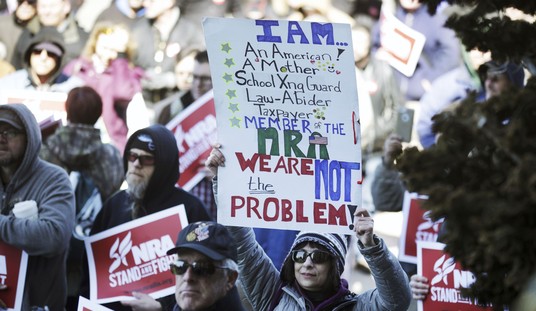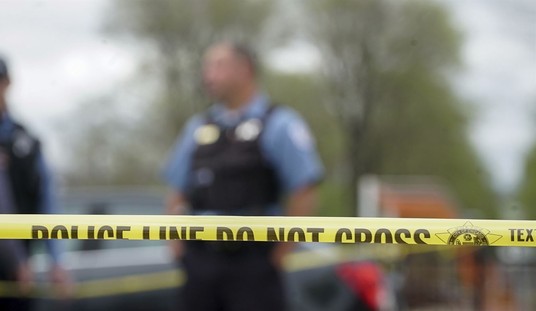With gun control legislation bottled up (for now anyway) on Capitol Hill, anti-gun groups are turning their attention to state legislatures in their quest to put more gun control laws on the books. In Ohio, a group of Democrats are partnering with gun control groups for a virtual “gun safety conference” today that’s really nothing more than a bashing of a new bill that would make the state a Second Amendment Sanctuary. Meanwhile in Virginia, Democrat Attorney General Mark Herring is holding a “virtual roundtable” on gun violence prevention that’s going to be long on new gun control laws and short on actually targeting those responsible for the violence.
As we point out on today’s Bearing Arms’ Cam & Co, however, if gun control was truly the answer to preventing violence, then we wouldn’t be seeing headlines in California that point out the sharp increase in shootings in cities like Oakland, which is now on pace for the second straight year of more than 100 homicides.
In Oakland (and the rest of California), anyone attempting to legally purchase a gun must go through a background check and a ten-day waiting period. They must also pass a background check in order to legally buy ammunition, and it’s actually a crime for a California resident to bring in ammunition from out of state. California has a ban on so-called high capacity magazines and “assault weapons,” and no new models of handguns have been available for sale since the state’s microstamping law took effect a decade ago.
Gun sales are limited to one per month, concealed carry is restricted to only those who can demonstrate a justifiable need, red flag laws allow police to seize firearms even if no crime has been committed, and dozens of other rules and regulations are on the books, all with the stated intent of stopping the criminal misuse of firearms. And yet…
His mentors still cannot believe it and his mother cannot bring herself to talk about the stray bullet that killed 18-year-old Demetrius Fleming-Davis.
He had just helped prepare raised garden beds at the internship he worked on top of shifts at the Dollar Tree and between junior college classes. He discussed his weekend plans: turning over soil in his mother’s yard and hanging with friends to shop and search for the best taco.
Riding in the back of a friend’s truck, he wasn’t far from his childhood church when a bullet from nowhere came and killed him. Homicide detectives say Demetrius was simply in the wrong place.
His death on April 10 came on the 100th day of 2021. It was the deadliest day of the year, with three homicides. Oakland now has 44 homicides this year, a murder every three days. If the pace continues, Oakland will have a triple-digit homicide count for a second year in a row, after years of declines.
The San Jose Mercury News goes on to say that police and “activists” (what kind of activists, the paper doesn’t say) believe that two things are fueling the violence: more guns and fewer violence prevention programs that have successfully brought down Oakland’s homicide rate in recent years, at least until the pandemic stopped many of those local, community-based programs dead in their tracks.
Now, it’s true that 2020 saw a record number of guns sold across the country, but the fact remains that the number of privately owned firearms has been steadily increasing for decades, and violent crime’s been dropping at the same time. Until last year, violent crimes rates were about 50% less than what they were in the early 1990s, even as tens of millions of guns were sold to legal gun owners and millions of those gun owners became concealed carry holders. Despite what gun control activists believe, the reality is that more guns doesn’t not equal more crime, and a look at the FBI’s Uniform Crime Report and NICS numbers over the past 20 years makes that abundantly clear.
What really changed last year, not just in Oakland but in most major cities, was a reduction in those community-based intervention programs like Oakland’s Ceasefire combined with a major slowdown in the criminal justice system (along with a pullback from police, both voluntarily and as a result of cuts to police budgets). As the Mercury News points out, it was the success of the city’s violence prevention programs targeting the most likely offenders that led to the decline in homicides between 2016 and 2019, not California’s gun control laws. Why then should we believe that the rise in shootings and homicides in Oakland (and San Francisco, Los Angeles, and other big cities in California) starting last year was somehow because of the increase in legal gun sales and not the decline the use of programs like Ceasefire?
The “ban and arrest our way to safety” crowd may be turning more of their attention to the states at the moment, but their empty promises of increased security at the expense of our civil rights should be rejected in statehouses from coast-to-coast. We don’t need any new gun control measures or restrictions on the right to keep and bear arms to successfully target violent crime. We need a functioning court system as well as targeted deterrence efforts on the part of police and community activists who are working to de-escalate the kinds of conflicts that all too often end up taking the lives of innocent bystanders like Demetrius Fleming-Davis.









Join the conversation as a VIP Member